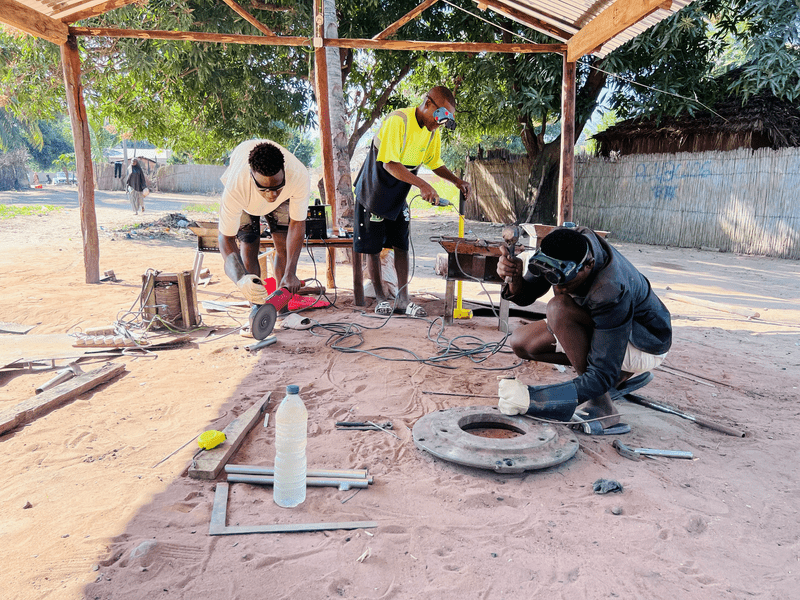Powering Rural Development: How Solar Mini-Grids Are Transforming Mozambique’s Countryside
Access to energy
is still a challenge across the Mozambican territory. This lack of energy isn’t
just about darkness after sunset - it limits access to healthcare, education,
business opportunities, and the tools communities need to thrive.
Through the
Renewable Energy for Rural Development (RERD2+) project, Enabel in partnership
with FUNAE, with the financing of the Belgian Development Cooperation, five
mini-grids are up and running across Zambézia and Nampula, delivering over 800
kWp of clean energy. More than 18,000 people - along with 200 businesses,
schools, and health centers - are now connected to reliable power.
Going Beyond Electricity
Electricity demand is rising across all five sites, though at varying rates. In the most dynamic location, energy demand has doubled in just six months. In contrast, the least performing site is expected to reach the same demand growth only within the next five years. These trends highlight the reality that for mini-grids to be commercially viable, energy uptake must grow rapidly and be actively supported. Without paying users (households, businesses, or institutions) even the best infrastructure risks failure.However, enhancing energy demand isn’t as simple as flipping a switch. While households benefit from basic uses like lighting, radios, or televisions — which do improve daily life — the real power of electricity lies in what it can fuel. So, the challenge is to match energy access with economic activation. After all, scaling these systems cannot rest solely on the shoulders of the public sector and it requires participation and investment from the private sector to ensure long-term impact.
Small and medium-sized enterprises (SMEs) such as those engaged in handicrafts, welding, or agriculture are critical, not only as major energy consumers, but also as engines of local job creation and income generation.
Rethinking Design and Implementation
That’s why we are taking a new approach looking at embedding economic development opportunities as a core component in the design, construction, and operationalisation of mini-grids. Promoting the productive use of energy (PUE) must go hand in hand with infrastructure deployment through raising community awareness, supporting entrepreneurship, and strengthening local businesses. This integrated approach ensures that the electricity not only powers the communities, but also enhances socio-economic development.As stakeholders and innovators recently gathered at the National Renewable Energy Business Conference – RENMOZ – we used the platform to share these key learnings and help shape the next wave of investment, policy, and partnerships needed to scale rural electrification and unlock its full potential for economic transformation.
Looking ahead, site selection for future mini-grid investments must incorporate three critical dimensions: economic activity readiness, availability of social infrastructure and services before electrification, and demand activation potential. These indicators will not only inform where to invest, but also shape the types of incentives, de-risking strategies, or risk-sharing mechanisms that public investors should align with the private sector as preferred partner for operationalising the grids in the long run.
As Mozambique advances its energy transition agenda, Enabel remains committed to scaling this model, ensuring that future investments are impactful and backed by strong partnerships between the private and public sector.
Laatste nieuws van dit project
Geen nieuws

